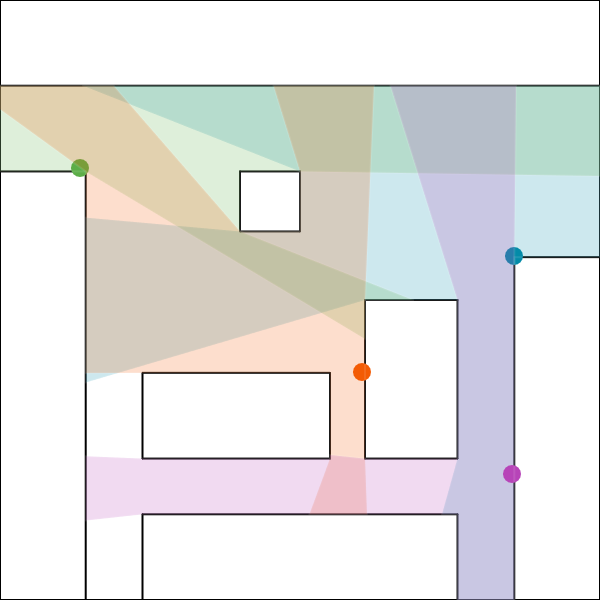MIDAS


The placement of sensors in a network is a complex, constantly changing data-science problem. While many think guesswork is a good enough answer, PolyChord thought otherwise. After a 3-year work programme with the UK Ministry of Defence, Polychord has created MIDAS (Maximum Information Deployment Assessment Strategy) - a unique technology that calculates the best placement of transmitters in a network.
You can see the dramatic increase in coverage compared to the too-common strategy of guessing the best placement. Compared to machine learning, a fancier version of guessing, MIDAS also gives you quantitative answers so you know exactly why your placement is best.

If we find an optimal network layout, but most of the coverage comes from a single sensor, the network isn't very robust, as a failure of that one sensor would massively disrupt the entire network. Instead, it's sometimes better to design a network that is resistant to individual sensor failures whilst delivering “good enough” coverage.
With MIDAS, you can choose which parameters are most important for your network layout - e.g. best possible coverage, the most cost-effective solution, the most “aesthetically pleasing” placement, etc. MIDAS can easily deal with many complex constraints.
MIDAS can also easily deal with several complex constraints. For example, there might be a building in the area upon which we cannot place a transmitter. MIDAS can easily adjust and get the best possible outcome, without needing to recalculate the entire solution.
This is just the tip of the iceberg for what MIDAS can do. From optimising the local wireless network in a business to optimising the locations of 5G masts in a large city, MIDAS is a vast, wide-ranging piece of software practical for an amplitude of telecommunication scenarios. To learn more, head to our contact us page and shoot us a message for more details.